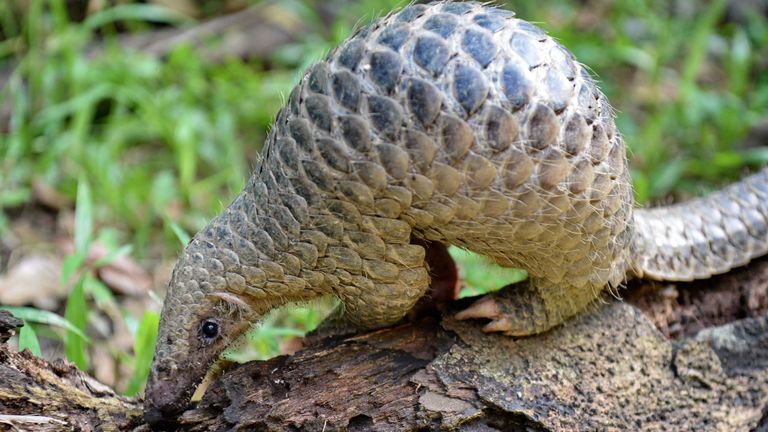Bats that lived in a Cambodian cave in 2010 carried a pathogen that is “nearly identical” to the virus that causes COVID-19, scientists have discovered.
Samples the scientists tested have been stored in a freezer at the Pasteur Institute in Phnom Penh, Cambodia, since December 2010 following a study by the Natural History Museum in Paris and mandated by UNESCO.
By sequencing samples from 430 bats gathered more than a decade ago, they found viruses “nearly identical” to the one that causes COVID-19 in two Rhinolophus shameli bats, otherwise known as Shemal’s horseshoe bats, which are found in Cambodia, Laos, Myanmar, Thailand and Vietnam.
Live COVID updates from the UK and around the world
In a report released this week, which has not yet been peer reviewed, the group said the bats shared 92.6% of the same identity as SARS-CoV-2, the virus that causes COVID-19.
The bats had been living in a cave in northeastern Cambodia’s Steung Treng province, which borders Laos.
The researchers had flagged their discovery in November but had not yet sequenced the genome to see just how close a relative it was to the virus that causes COVID-19.
This week, they said their findings could be crucial in discovering where the virus originated while further surveillance of bats and other wild animals in the region could mean the world is better prepared for the next pandemic.
Several sections of the bats’ genome “are genetically closer to SARS-CoV-2 than any other closely related viruses discovered to date”, the researchers wrote.
Last year, scientists in Yunnan, China, discovered viruses in a horseshoe bat sample from 2013 and another from 2019 that were 96.2% related.
Two viruses closely related to SARS-CoV-2 were also found in February last year in Malayan Sunda pangolins that had been smuggled into southern China.
The Pasteur Institute scientists, funded by the US and French governments, said their finding “indicates that SARS-CoV-2 related viruses have a much wider geographic distribution than previously understood, and likely circulate via multiple Rhinolophus species”.
Investigators from the World Health Organisation (WHO) are currently in Wuhan, China, to determine exactly where and how the pandemic started after the virus first emerged there in late 2019.
Subscribe to the Daily podcast on Apple Podcasts, Google Podcasts, Spotify, Spreaker
The Pasteur Institute scientists said Southeast Asia, and not just China, “may represent a key area to consider in the ongoing search for the origins of SARS-CoV-2, and certainly in broader coronavirus surveillance efforts”.
They added that the region hosts a high diversity of wildlife and there is “extensive trade in, and human contact with, wild hosts of SARS-like coronaviruses”.
The region is also undergoing “dramatic land-use changes… that can increase contacts between bats and humans”.
“Continued surveillance of bats and other key wild animals in Southeast Asia is thus crucial, not only to find the SARS-CoV-2 reservoir, but to also be better prepared for the next pandemic,” they concluded.

